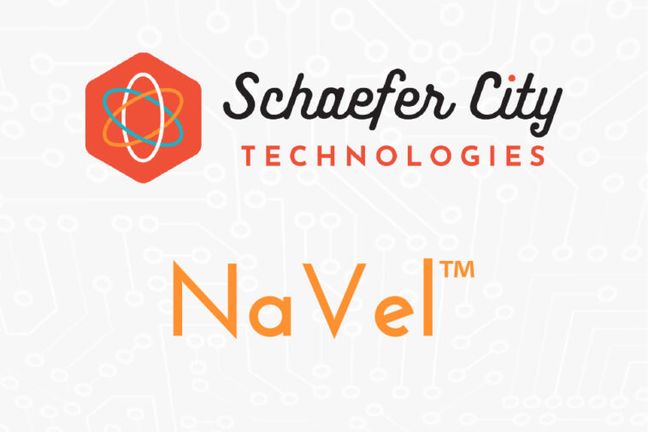Nuclear Verdicts® are dramatically increasing in both severity and frequency, throughout the United States.[i] The term “Nuclear Verdicts®” refers to jury verdicts or settlements over $10 million, or verdicts where the award is grossly disproportionate to the economic damages and facts of the case. And the problem is getting worse: Nuclear Verdicts® have doubled in dollar value since COVID-19,[ii]with one award topping $7.3 billion in 2022! And while they are eye-popping on their own, these verdicts also have widespread negative economic consequences for society who ends up footing the bill through higher insurance premiums and costs.
How did we get here? Simply put, the plaintiffs’ bar changed its tactics while the defense bar has continued to draw its strategies from the same old playbook. While the plaintiffs’ bar used to engage in tactics designed to generate sympathy from jurors, through the proliferation of the so-called “reptile theory”[iii] and similar methods, the plaintiffs’ bar focuses now on igniting and inflaming anger. Despite the fact that jurors across the country are instructed they may not allow bias to impact their deliberations nor render verdicts based on emotions,[iv] plaintiffs’ counsel urges them to do just that. This tactic is particularly dangerous for corporate defendants, who appear ripe for punishment in the eyes of an angry, mistrustful jury.
Is this justice? No! Such jury awards fueled by anger and delivered contrary to the law do not reflect a considered evaluation of the evidence. And while the insurance industry and its counsel recognize the tactics are unfair and the outcomes unjust, the defense has been slow to adopt strategies to combat them. But now we have a new playbook. In 2020, Tyson & Mendes Strategic Managing Partner Bob Tyson published the first, and as yet only, playbook for the defense, Nuclear Verdicts: Defending Justice for All, which presented in detail the Nuclear Verdicts® defense methods for defusing juror anger and stopping Nuclear Verdicts®: accept responsibility; personalize the corporate defendant; give a number; and argue pain and suffering.
What else has Tyson discovered? There is a pattern to all Nuclear Verdicts®! The methods outlined in the book, used collectively, are the key to breaking the pattern driving Nuclear Verdicts® in our country and stopping runaway juries. In a random sampling of 100 cases that resulted in Nuclear Verdicts®, research has shown that 100% of them failed to employ these four methods and defuse juror anger.[v] If the defense employs these four methods, the pattern of Nuclear Verdicts® can be broken.
Since the book’s publication though, the insurance industry has repeatedly asked a compelling question: how can I spot a Nuclear Verdict® on my desk before it happens? After hearing this time and again from insurance carriers, Tyson posed it to his sister, Denise Tyson, an experienced insurance executive with a background in insurtech.
Together, the Tyson siblings took this question to heart, knowing the pattern of Nuclear Verdicts® was the key to employing data to find a solution. The result was Schaefer City Technologies and its innovative software, NaVel™, which uses artificial intelligence to identify, mitigate, and reduce the risk of Nuclear Verdicts® in life claim files.
This author had the pleasure of interviewing Denise Tyson, CEO of Schaefer City Technologies, to talk about NaVel™’s revolutionary approach, the selected highlights of which are below.
Question: Why did you and Bob create Schaefer City Technologies?
Denise Tyson: We created Schaefer City Tech in 2022 to help insurance companies and their defense counsel spot and defend against Nuclear Verdicts®. Our goal is to innovate, create, and implement technologies which support and streamline the needs of the insurance industry with particular focus on mitigation and management of Nuclear Verdicts®.
Question: How did the name Schaefer City Technologies come about?
DT: Growing up in New York in the 1970s, there was a beer called Schaefer Beer, and it was our dad’s favorite. They had a marketing slogan: “Sittin’ pretty in Schaefer City,” which meant you had made it. You met your definition of success. Our father has felt for a long time that we are sitting pretty in Schaefer City, so we named the company in his honor.
Question: What is NaVel™?
DT: NaVel™ stands for “Nuclear Verdict Exposure Likelihood.” This software was designed to assist insurance companies with their independent claims analysis by assessing the likelihood that a claim may result in a Nuclear Verdict®. NaVel™ uses predictive analytics embedded in an insurance company’s existing claims software and applies artificial intelligence directly to the insurance claims file to deliver a risk assessment.
Question: How was the NaVel™ software created?
DT: After obtaining over 100,000 jury verdicts and settlements containing more than 10 million data points from one of the Big 3 insurance data companies in the world, we partnered with the Villanova School of Business – Bob’s (Tyson) and my alma mater. One of their associate professors, Nathan Coates, took on this project as a real-life problem for his students, and they solved it! The sophisticated algorithm they developed can analyze the data from an insurance company’s live claims file and identify the data points to facilitate the identification and management of potential Nuclear Verdicts®.
Question: What are Navel™’s key features?
DT: Navel™ can interface with any existing computer system an insurance company is already using. It analyzes certain data points and attributes on a particular claim from the outset at First Notice of Loss through conclusion of claims file, on a continuous basis as new data is added to the claims file, and it compares those attributes to the more than 10 million data points from our 100,000 jury verdict cases.
The software then generates a NaVel™ score from 1 to 10, with green, yellow, and red color coding, which appears in the insurance company’s existing computer software at all times. An icon is placed on the claims file, so the NaVel™ score is always visible. This predictive algorithm will adjust the NaVel™ score and assess the insurance company’s new data as it is added in real time, such as medical data, wage loss, venue, and other data points correlating to potential risk.
Question: Are there any features for the insurance company’s supervisors and managers?
DT: NaVel™ provides tools for management oversight, with analytics on the claims reviewed and scored in the form of a dashboard. The management team can see data for all the claim files reviewed and scored by NaVel™.
Analytics include the number of claims scored, distribution of the scores across different lines of business, and a summary for the claim representatives handling those files. It also allocates scores on files assigned to defense counsel handling those matters.
Question: What is required to implement NaVel™?
DT: Very little on the part of the insurance company. The program can interface with any existing claims system. It does not have to be downloaded or uploaded into the insurance company’s claims system and does not require the input of any additional data in a different program. There is no training required. The insurance company’s data is neither saved nor stored by Schaefer City Technologies. The software requires no maintenance by the insurance company.
Question: What are the benefits of NaVel™?
DT: This groundbreaking and innovative software makes a massive difference in how claims are analyzed and can make a difference in the strategies developed to resolve them. The normal processing of = claims, when interfaced with NaVel™, alerts the claims representative, supervisors, and managers so they can assess the file in accordance with their own policies. This allows the insurance company to have well-informed discussions with internal management and defense counsel. Strategies and evaluation can be adjusted as the claim progresses.
Question: How can readers learn more about the product?
DT: We welcome the opportunity to offer demonstrations! Readers who would like to know more or who want to request a demo can visit our website at www.schaefercitytech.com. Also, we are happy to conduct a complimentary proof of concept on a limited number of the insurance company’s own files so the company can become acquainted with the software.
Question: What new products are on Schaefer City Tech’s horizon?
DT: Schaefer City Tech is developing a chatbot software called Big Blue™ for defense litigation counsel. This is based on the same analytics, research, and defense litigation strategies, and. will provide immediate assistance to defense counsel seeking to evaluate potential runaway verdict problems. It will include access to our immense Nuclear Verdicts® encyclopedia as well as many more exciting features that will enable counsel to develop winning strategies. We anticipate its release in early 2024.
Takeaway
Detecting Nuclear Verdicts® before they happen is a reality! NaVel™ helps insurance companies start evaluating a claim’s potential to go nuclear from day one, well before trial, and can red flag Nuclear Verdict® risks as the claim progresses and new information is obtained. Insurance companies have the opportunity to assess and address risks before high risk files make their way to the courtroom. Schaefer City Tech is changing the game to take back justice – for all. Thank you to Denise Tyson for sharing these exciting developments!
Keep Reading
More by this author
Sources
[i] The introduction of Nuclear Verdicts ® on the trial scene coincides with the publication of Reptile: The 2009 Manual of the Plaintiff’s Revolution, by David A. Ball and Don C. Keenan
[ii] Marathon Strategies March 2023 Report: Corporate Verdicts Go Thermonuclear”. Page 6, https://marathonstrategies.com/corporate-verdicts-go-thermonuclear-report/
[iii] In this context, reptile tactics, is the use of psychological strategies to impact the “reptile” portion of the human brain that is focused on survival.
[iv] See, CACI 113, 3905A.
[v] According to research for Nuclear Verdicts®: Break the Pattern, Robert F. Tyson and Cayce E. Lynch, coming in 2024.

 Author: Roberta E. Nalbandian
Author: Roberta E. Nalbandian
 Cannabis Workers Allege Quota to Trim 4 Pounds a Day Violates the California Labor Code
Cannabis Workers Allege Quota to Trim 4 Pounds a Day Violates the California Labor Code
 The Ninth Circuit Reminds Us: Every Word Matters
The Ninth Circuit Reminds Us: Every Word Matters
 NO WAY, PRO SE! The Consequences of Abusing the Judicial System as a Pro Se Litigant in Colorado
NO WAY, PRO SE! The Consequences of Abusing the Judicial System as a Pro Se Litigant in Colorado
 Victim of Financial Mismanagement or Unlawful Retaliation? New Jersey City University Program Founder Claims School Retaliated After Reporting Alleged Sexual Harassment
Victim of Financial Mismanagement or Unlawful Retaliation? New Jersey City University Program Founder Claims School Retaliated After Reporting Alleged Sexual Harassment
 “Real Housewives” Gets a Reality Check
“Real Housewives” Gets a Reality Check
 Missing a Chapter: Insufficiency of Expert Deposition Testimony in Medical Malpractice Litigation
Missing a Chapter: Insufficiency of Expert Deposition Testimony in Medical Malpractice Litigation
 Crash Course: Why Summary Judgment Misses the Mark in Illinois Multi-Cause Limousine Crash Collision
Crash Course: Why Summary Judgment Misses the Mark in Illinois Multi-Cause Limousine Crash Collision
 Bitter Truths: Lead, Cadmium, and Defective Pleadings in California Chocolate Class Action
Bitter Truths: Lead, Cadmium, and Defective Pleadings in California Chocolate Class Action
 The Law of Unintended Consequences: Including Insurance Brokers in Litigation Strategy Communication May Waive the Attorney-Client Privilege
The Law of Unintended Consequences: Including Insurance Brokers in Litigation Strategy Communication May Waive the Attorney-Client Privilege
 Don’t Make The Mistake of Being Vague – Review Your § 998 Offers
Don’t Make The Mistake of Being Vague – Review Your § 998 Offers
 Proposed California Bill Would Make Pain and Suffering Damages Available in Survival Actions
Proposed California Bill Would Make Pain and Suffering Damages Available in Survival Actions
 $15 Million Punitive Damages Award Vacated in Asbestos Injury Case
$15 Million Punitive Damages Award Vacated in Asbestos Injury Case
 A Preservation of Evidence Letter is Not Enough to Protect an Attorney or Their Client From Consequences for Spoliation of Evidence
A Preservation of Evidence Letter is Not Enough to Protect an Attorney or Their Client From Consequences for Spoliation of Evidence
 Contractor’s Claiming Workers Compensation Exemption Can Lose Much More
Contractor’s Claiming Workers Compensation Exemption Can Lose Much More